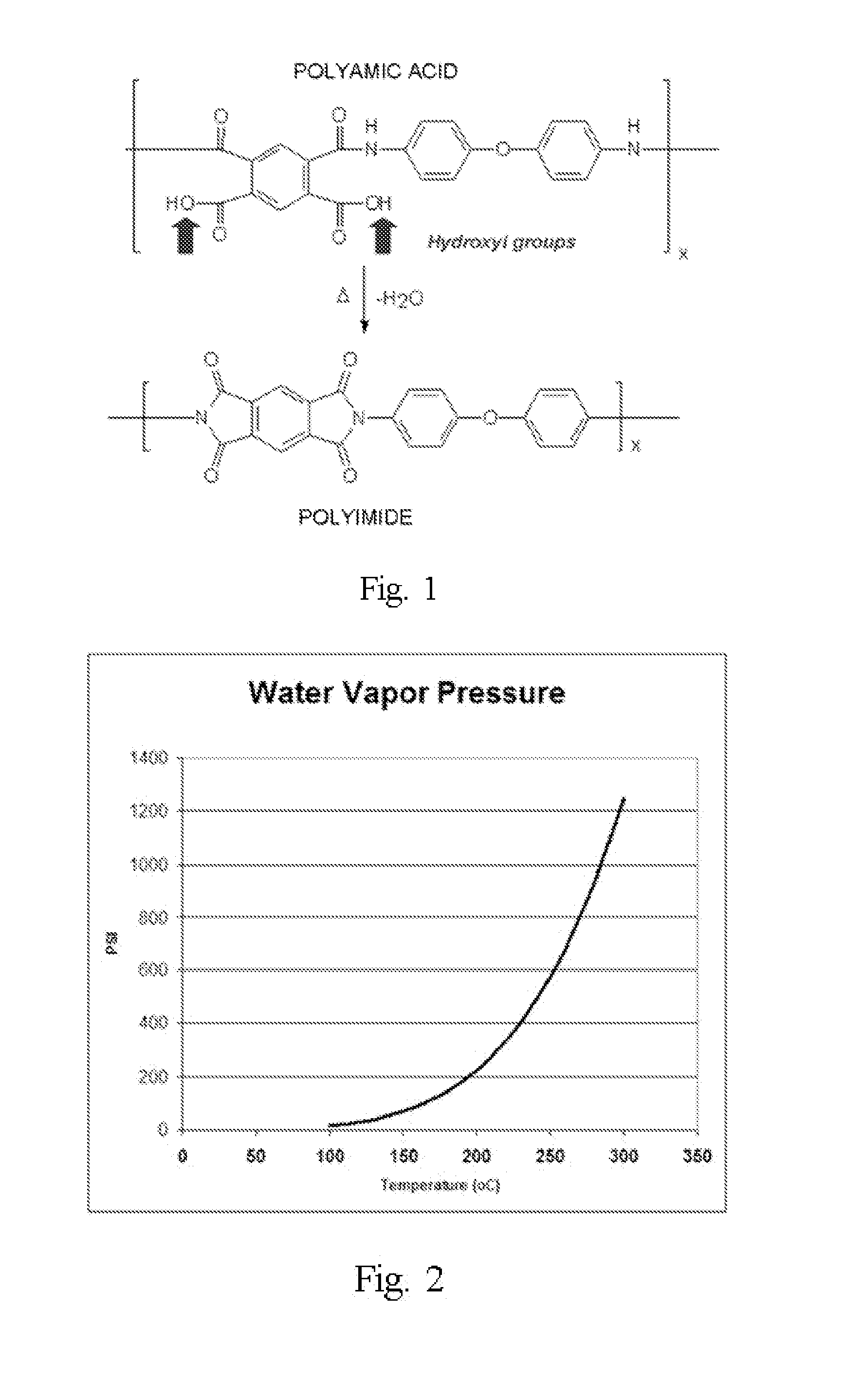A-staged Thermoplastic-Polyimide (TPI) Adhesive Compound and Method of Use
- Summary
- Abstract
- Description
- Claims
- Application Information
AI Technical Summary
Benefits of technology
Problems solved by technology
Method used
Image
Examples
Embodiment Construction
[0057]TPI coatings are made by polymerizing polyamic-acid (PAA) polymer in polar aprotic solvents, such as NMP (N-methylpyrrolidone), DMAc (dimethylacetamide), and DMF (dimethylformamide). The PAA's solids concentration can be 5-40% in solution (by weight), and commonly 15-25%. TPI-PAA solutions are a one-part adhesive, and very stable when kept in a freezer or left out at room temperature for a few days.
[0058]Typical TPI diamine can be, for example, one or more of the following monomers: 3,5-diaminobenzoic acid (DABA), 3,3′-diaminobenzophenone (3,3′-DABP), 3,4′-diaminobenzophenone (3,4′-DABP), diester diamine (RDEDA), 1,3-bis-(4-aminophenoxy) benzene (TPER), 3,4′-oxydianiline (3,4′-ODA), 4,4′-oxydianiline (4,4′-ODA), 4,4′-methylene dianiline (4,4′-MDA), an aliphatic diamine, or a silicone-diamine among others.
[0059]Typical TPI dianhydride can be one or more of the following monomers: 3,3′, 4,4′-biphenyltetracarboxylic dianhydride (BPDA), 3,3′, 4,4′-benzophenone tetracarboxylic dian...
PUM
| Property | Measurement | Unit |
|---|---|---|
| Temperature | aaaaa | aaaaa |
| Temperature | aaaaa | aaaaa |
| Percent by mass | aaaaa | aaaaa |
Abstract
Description
Claims
Application Information
 Login to View More
Login to View More - R&D
- Intellectual Property
- Life Sciences
- Materials
- Tech Scout
- Unparalleled Data Quality
- Higher Quality Content
- 60% Fewer Hallucinations
Browse by: Latest US Patents, China's latest patents, Technical Efficacy Thesaurus, Application Domain, Technology Topic, Popular Technical Reports.
© 2025 PatSnap. All rights reserved.Legal|Privacy policy|Modern Slavery Act Transparency Statement|Sitemap|About US| Contact US: help@patsnap.com

